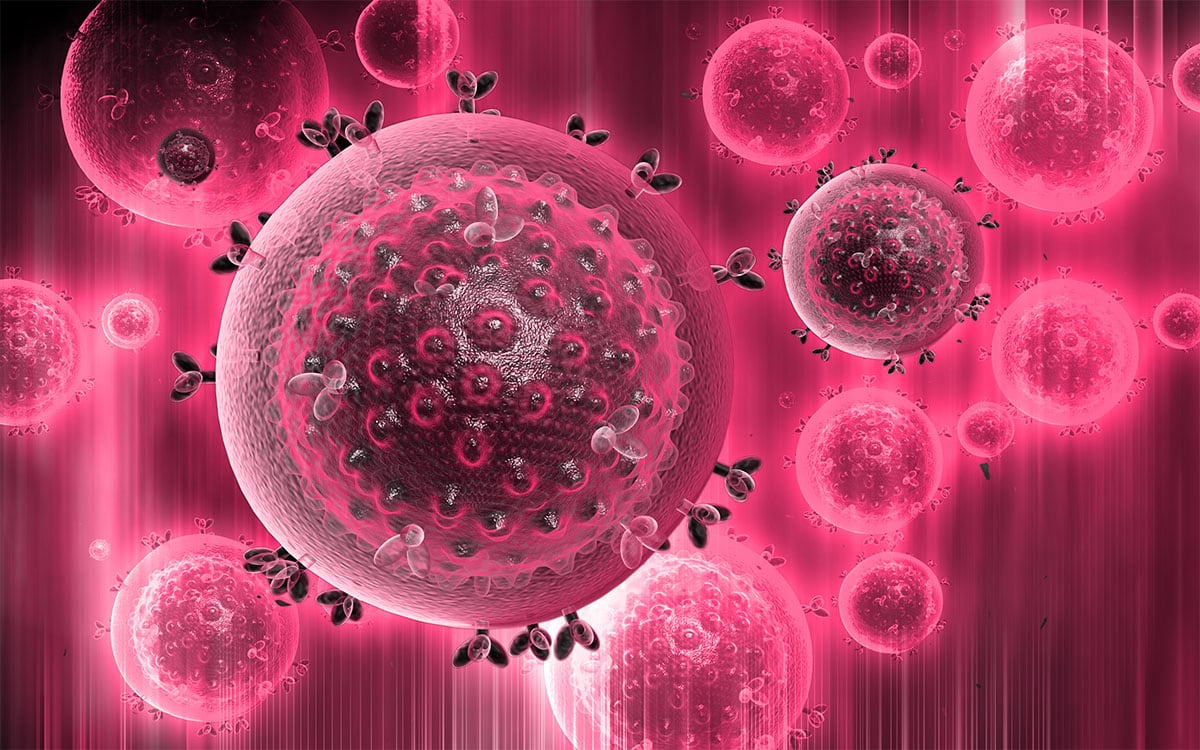- Your cart is empty
- Continue Shopping
The Condition of HIV and AIDS

HIV is a common disease that has affected nearly 40 million individuals worldwide. While its incidence is significant, HIV and its associated risk have declined in recent years due to the advances in treatment. Of note, however, is a new HIV variant discovered circulating in Europe, particularly in the Netherlands, that has shown to be more severe in its evolution.
This news has begun to raise public health concerns and the necessity for an HIV-specific vaccine. However, no HIV-specific vaccine is available, though research has been initiated.
This new discovery has made it necessary for further education about HIV. It has emphasized the importance of frequent testing and adherence to the current treatment available for those who are HIV positive.
What follows will be information about HIV and the disease process and how it can be treated or prevented. Modern medicine has led to the currently available treatment and prevention interventions that can mitigate symptoms and halt transmission. It’s important to understand that this disease still does not have a cure.
Characteristics of HIV
Human Immunodeficiency Virus (HIV) is a viral infection that makes it more difficult for the immune system to defend against further infection or disease. This is because HIV attacks the cells that are directly responsible for such a defense.
When HIV infection occurs, the HIV virus attaches to helper T-cells, which are a type of lymphocyte or white blood cell. When it attaches, the virus is then able to be injected into a target cell, and the spread of the virus dramatically increases. HIV effectively decimates the number and the effectiveness of helper T-cells in the normal immune response.
Without successful treatment, HIV can continue to worsen, ultimately reaching the stage named Acquired Immuno-Deficiency Syndrome (AIDS). While the stage of AIDS is far less common today due to available medical treatment, it can still occur in rare circumstances.
The following are the developmental stages of HIV that outline the progression to AIDS:
- Stage 1 – Acute HIV: This is the initial stage of HIV and is the first time that an individual will experience symptoms. It’s also the stage of the most rapid activity of the virus, during which it attacks and destroys defensive cells of the body.
- Stage 2 – Chronic HIV: During this stage of HIV, most individuals will have an asymptomatic experience as the virus continues to spread throughout the body. By following a specific medical protocol for the treatment of HIV, the disease process can stabilize during this stage.
- Stage 3 – AIDS: This stage of the developmental process is the most severe stage. This stage is usually reached in individuals who have not had any treatment. At this stage, an individual with HIV has now developed AIDS. The risk of transmission of the virus to others is at its highest level, and the immune system is at its weakest. During this time, the T-cell counts become dramatically low, and the individual is extremely susceptible to other infectious processes.
HIV has a prevalence of over 1.2 million Americans, 14% of who unknowingly have the condition.
Causes of HIV Infection and Risk Factors
The primary cause of HIV infection is the transmission of the virus via infected bodily fluids (blood, semen, or female secretion) from one person to another.
Viral transmission can occur in several ways. The most common ways for HIV to transmit is through sexual intercourse (oral, anal, or vaginal) and into the bloodstream directly by contaminated needles. It can also transmit to newborns during childbirth or breastfeeding.

Those who are at the highest risk of contracting HIV infection are individuals who have unprotected sexual intercourse and those who participate in intravenous drug use.
HIV can transmit to anyone of any age, race, health status, or sexual orientation.
Signs and Symptoms of HIV Infection
The signs and symptoms of HIV and AIDS vary greatly depending on the severity and stage at which the viral infection has progressed.
The following are the most common signs and symptoms experienced after infection:
- Muscle Aches and Pains
- Night Sweats and Chills
- High Fever
- Extreme Fatigue, Weakness, and Lethargy
- Development of Mouth Ulcers
- Nausea and Diarrhea
- Unusual Weight Loss
- Skin Irregularities (Rashes, Bumps)
Many of these signs and symptoms commonly occur in individuals with HIV infection, but they are not exclusive to HIV, and they aren’t definitive proof that the individual has HIV. Others who do have HIV may not experience symptoms at all.
Treatment and Prevention of HIV and AIDS
Although a cure for HIV has not been achieved, there are effective treatment and preventative interventions that can be employed to both manage or avoid infection altogether.
Such treatment and preventative measures can also aid in the prevention of the progression of the disease for those who have already contracted HIV. Upon diagnosis of HIV, treatment must be initiated immediately.
The following are the most common treatment and preventative interventions available for HIV and AIDS:
- Antiretroviral Therapy (HIV Medicine)
- Pre-Exposure Prophylaxis and Post-Exposure Prophylaxis
- Sexual Abstinence or the Use of Protection
- Avoidance of Intravenous Drug Use
Antiretroviral therapy is the primary treatment for HIV. Requiring a daily regimen of HIV medications, antiretroviral therapy aids in the halt of viral reproduction, thus allowing the immune system to stay intact and strong enough to defend against infection.
Finally, pre-exposure prophylaxis is an HIV preventative medication that can be employed to avoid contracting HIV. Contrastingly, post-exposure prophylaxis is HIV medication to prevent HIV illness development in those who have recently been exposed to another individual who is HIV positive.
Final Thoughts
As modern medicine continues to develop and innovate, the chances of finding a cure for HIV become more possible. The fact that the virus is very adaptable and often mutates are only a couple of reasons for the difficulty in developing a universal vaccine.
Compared to 30 years ago, the life expectancy of someone living with HIV or AIDS has drastically improved, mainly due to antiviral therapy, and in part, due to effective education.
While there are no HIV-specific vaccines to treat or prevent HIV, research is currently ongoing.




